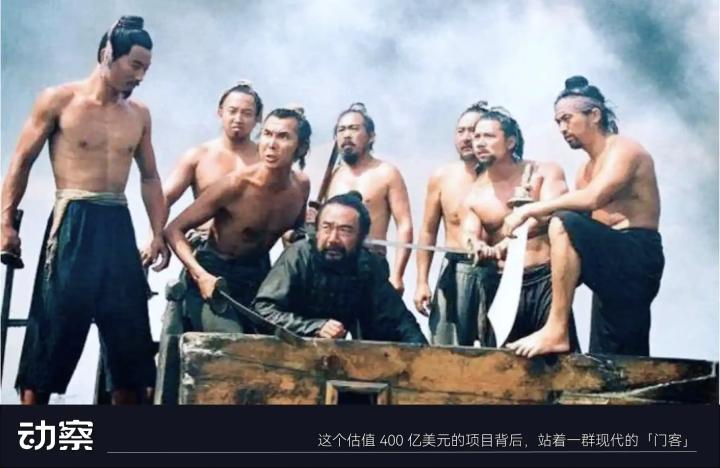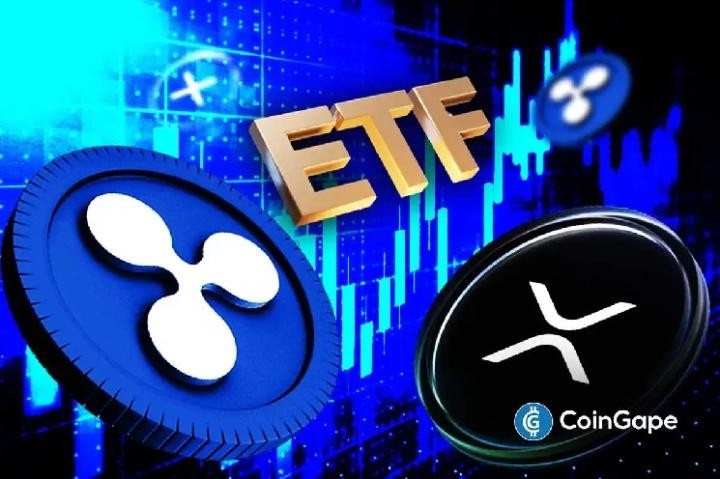Original|Odaily Odaily
Author: Wenser
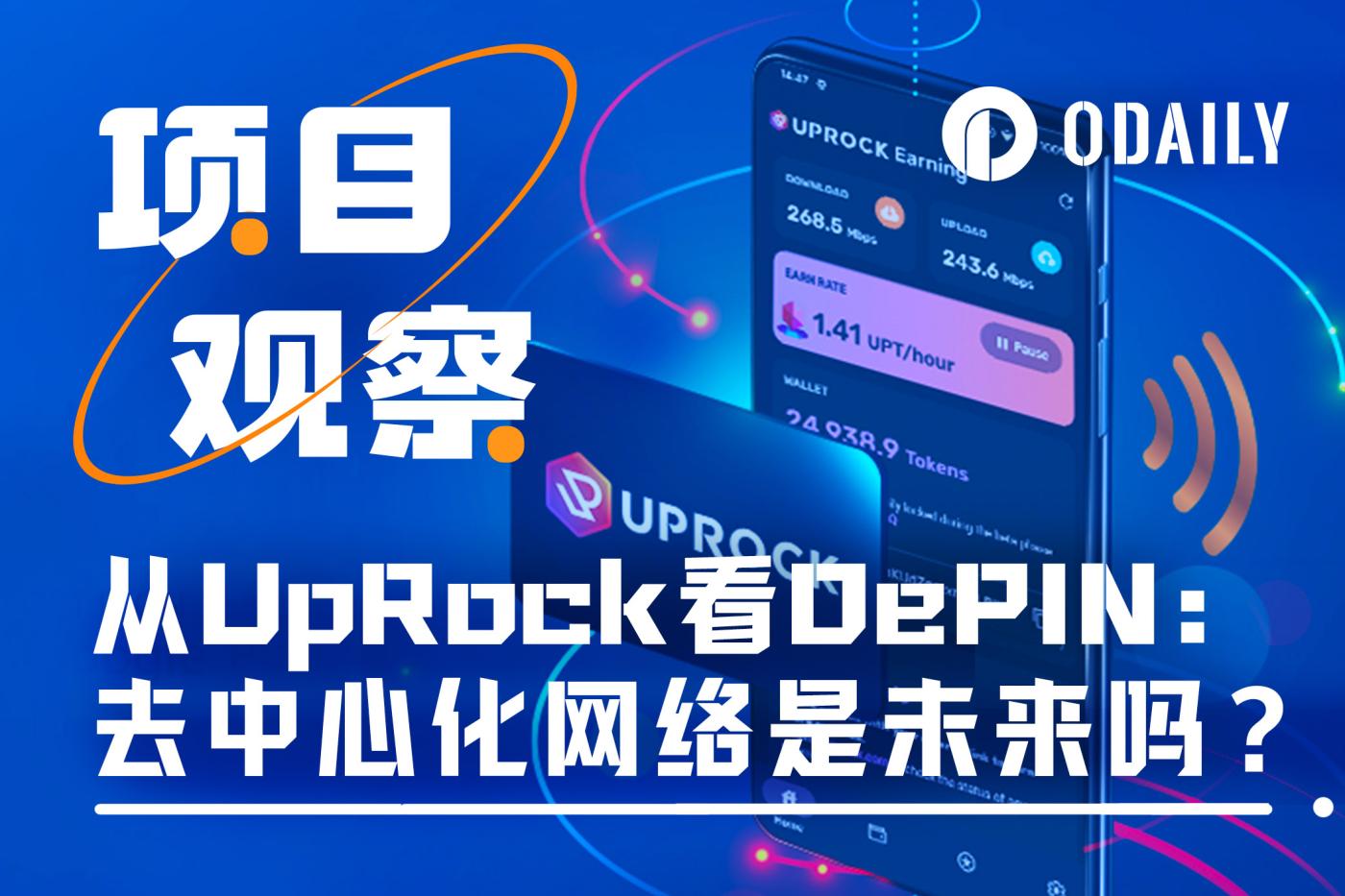
On April 22, Jupiter Exchange officially announced that the voting for the second phase of LFG Launchpad projects has ended. LST liquidity aggregation protocol Sanctum and idle bandwidth sharing network UpRock won the first and second place with 64% and 20% of the votes respectively. They will be launched on Launchpad in May and June. It is not surprising that the former was selected as a well-known DeFi project in the Solana ecosystem, but UpRock's final selection is somewhat like a "dark horse player". As a DePIN track project that was selected for both the first and second phases of Jupiter LFG Launchpad and finally stood out, UpRock finally "successfully landed".
Today, Odaily Odaily will use the UpRock project as a starting point to discuss the possible subsequent developments of the DePIN track.
UpRock: The intersection of AI and DePIN
UpRock, as the name implies, can be understood as "upward foundation stone", and the project white paper explains this as "from caveman's rock to Homo sapiens' UpRock". This name also highlights the project's ambition to create DePIN track infrastructure products for the future of AI Internet. Specifically, what UpRock wants to do is: through the "wallet + AI Chatbot + network mining" trinity application model, to achieve the value exchange between user bandwidth resources and AI data network needs, and on this basis, to provide various rights and interests empowerment and deflation control for the token UPT.

UpRock app login interface
UpRock product: Beta version is online, with low participation threshold and considerable number of users
In the introduction of UpRock's official account , the project first emphasized the low participation threshold: "You can install the application within 2 minutes and start earning UPT tokens", fully demonstrating the DePIN project's short, flat and fast positive feedback characteristics.
According to the latest data released by UpRock on April 16, the product currently has more than 800,000 Android installations and a 4.9-point App Store rating. The MacOS version is also online, and the IOS version is now open for pre-registration. The number of new users per week is as high as 50,000, the number of daily active users has reached 200,000, and the number of monthly active users has reached 650,000. In addition, UpRock currently has more than 280,000, 150,000 and 96,000 followers and community users on Twitter (X platform), Telegram and Discord respectively.
According to the official website, the number of UpRock network reality device IPs has exceeded 500,000, and network bandwidth resources are spread across 18,000 cities in more than 190 countries and regions around the world. According to the network resource heat map, UpRock products mainly cover Africa, Asia, Europe and other regions.
Subsequently, with the help of the knowledge acquisition layer (KAL) built on real devices, UpRock's products will be able to leverage the advantages of decentralized networks, real-time data capture, and diversified paid API interfaces, and provide corresponding customized services for content creation, market strategy, sports events, public opinion, brand management, cryptocurrency market analysis, historical data archiving research, and international diplomatic and cultural intelligence. While taking into account privacy and security, it maximizes the tool value and analytical value of AI.
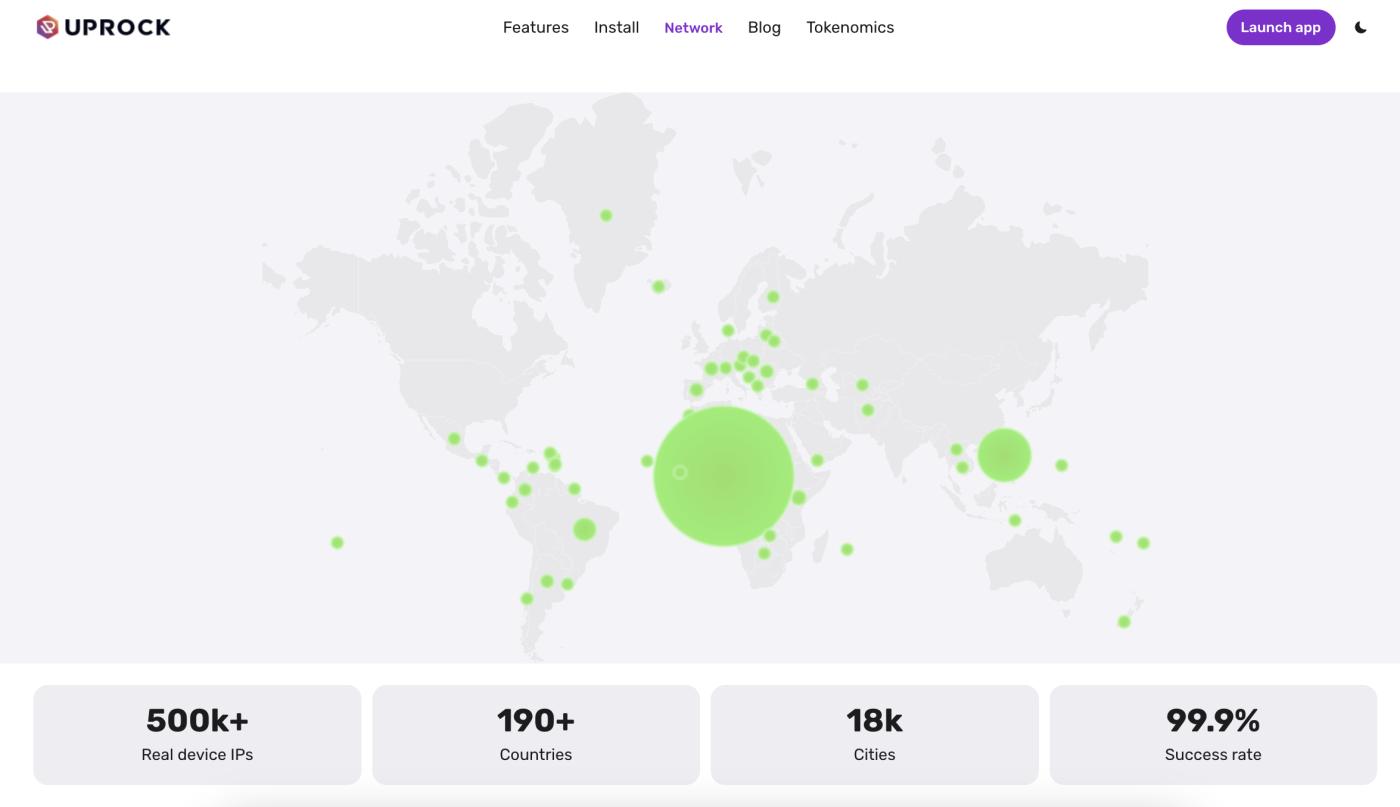
https://uprock.com/network
UpRock Token: Tokenomics has been confirmed, UPT token is not yet online
In the project white paper , UpRock mentioned that users can share network bandwidth and computing resources through project application products, and receive AI insight services (IaaS) built based on personal AI web crawlers through the AI Insight Exchange (AIX) panel. On the one hand, they can enjoy the transformative experience of the open source intelligence (OSI) market with a market size of up to US$7.7 billion; on the other hand, they are expected to get a share of the closely related business intelligence (BI) and data API markets, whose revenues will exceed US$25 billion and US$45 billion respectively in 2023.
At the same time, although the UPT token has not yet been launched, the token economics model of UpRock has been determined:
The maximum supply of tokens is 1 billion;
15% of the tokens are allocated to the team and 1% to consultants (to be unlocked in batches according to user milestones);
50% is allocated to the community (10% will be unlocked when the token is launched, and 90% will be unlocked within 90 days, with a subsequent repurchase mechanism);
4% is allocated to VC, DAO and angel investors (initially locked for 12 months, and then unlocked in batches within 4 years);
5% is allocated to exchanges and market makers;
15% is allocated to the project treasury;
10% is used for token issuance .

UpRock Token UPT Tokenomics and Release Time List
In addition, the token economics model white paper also mentions the main source of income for the project.
For C-end users, the main income includes:
AI Agent Usage: For every payment made using UpRock’s AI products, 50% of the UPT tokens are allocated to the treasury for further distribution, and the remaining 50% will be repurchased in UPT tokens and destroyed immediately.
Account management and services: A small fee is charged for any account-related changes, management and storage services. The fee is allocated in the following way: 50% is allocated to the treasury for redistribution, and 50% is injected into the LP liquidity pool through the repurchase mechanism.
For B-side users, the main income includes:
Bandwidth Sales: When the team sells user bandwidth, 20% of the proceeds are used to repurchase and redistribute UPT tokens, 40% goes into the treasury for future use, and 40% goes directly to network contributors.
Other platform fees: All fees generated in the platform in the form of UPT, 50% will be destroyed immediately, and 50% will be deposited in the treasury to be redistributed to contributors. The fees generated in other currencies (USDC, SOL, etc.) will be allocated 50% for UPT token repurchase, and 50% will be destroyed and credited to the company wallet.
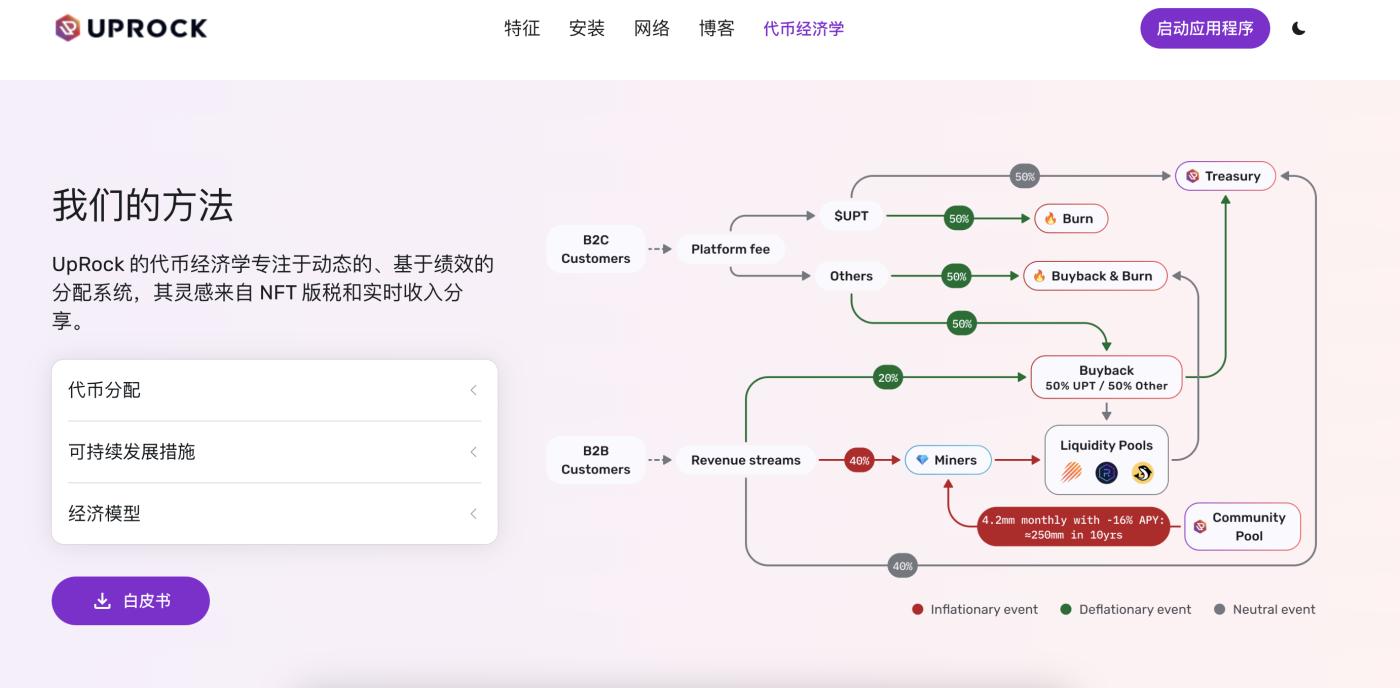
UPT Tokenomics Allocation Diagram
Specifically, the current calculation of users' mining income is mainly based on the following model: Reward rate = "Upload speed coefficient x download speed coefficient x connection type coefficient (Internet connection type, such as home, 4G or 5G) x freedom coefficient (the freedom score factor of the user's country/region calculated based on the degree of network openness)" x total mining time.
UpRock Team: Serial entrepreneurs from North America and Europe
According to information officially disclosed by UpRock, the project team members are from the United States, Turkey and Romania, and have previously completed multiple entrepreneurial projects, including: MiKandi App Store (an app store with millions of users, later acquired by a private company), Tenta Encrypted Browser (the world's first fully encrypted browser with built-in VPN, later acquired by Avast, a cybersecurity listed company ), BrandFace (brand video platform), BitBase (provides verification services for blockchain platforms such as Solana, Neon, Orchid and Orbs), The Ticket Finance (which raised more than US$300,000 through IDO), DePioneers NFT ( aims to support the most innovative DePIN projects, focusing on the concept of practical NFT, which is the predecessor of UpRock ).
Additionally, the UpRock team has been featured on prominent media platforms such as HBO, Vice, Wired, Forbes, and Anthony Bourdain's Parts Unknown.
It can be seen that although the members of UpRock are not Crypto Native Team, they are also at the level of "industry veterans".

Main members of UpRock team
Utility empowerment: making DePIN from virtual to real
Compared with other DePIN projects, the difference of the UpRock project lies not only in the combination of AI + DePIN, but also in its goal of "DePIN project token equity".
UPT Token Empowerment
In the project's official website and the previous Jupiter Launchpad shortlisted project introduction , UpRock emphasized the real rights and interests empowerment of UPT tokens.
With UpRock's products, users can not only obtain UPT tokens by sharing network bandwidth and computing resources, but also obtain a series of benefits including airdrops, exclusive discounts, travel rewards, passive income and even free call time. In other words, in the planning of the UpRock project, UPT is not only a platform token, but also an equity token with practical use cases.
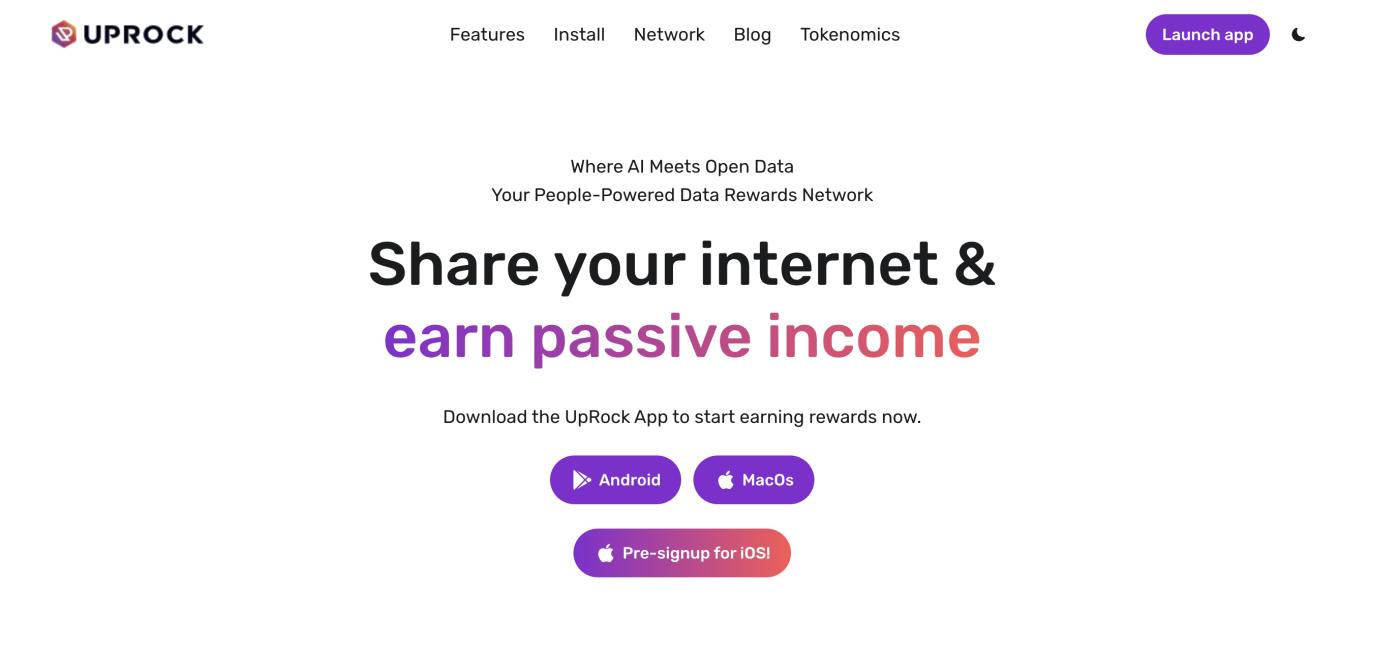
UpRock official website interface
Partners: Currently focusing on partners with complementary ecological resources
In the project's official blog interface and official tweets , UpRock briefly introduced its current partners: Based on a mobile-first growth strategy, UpRock's current partners include Koii Network (a desktop network with more than 15,000 nodes), Synesis One (Train 2 Earn platform on Solana), DATS Project and Cube Exchange, mainly serving the needs of accelerating network coverage.
In terms of offline equity cooperation resources, UpRock has not yet given more specific explanations.
Individual users: customized VIP service
On the official website, UpRock also showcased the UI interface of subsequent products, which included not only regular token rewards, but also AI information flow content interface and customized VIP services. At present, the token incentive function has been added on the basis of Chatbot, and it has been combined with the user's geographic location, existing trajectory and related activities.

UpRock official website interface
DePIN track: the future pillar of decentralized network
As the cryptocurrency market becomes more and more closely connected to the real economy, the DePIN (decentralized physical infrastructure network) track has become a key area of concern for more and more people, especially with the rapid development of AI. The competition for computing resources, network bandwidth resources, and network data resources has become increasingly fierce, and the call for the development of decentralized networks has also become increasingly high. Looking at the current DePIN projects, we can roughly divide them into the following three categories:
Physics Resources
These projects are mainly run through hardware devices, such as communication equipment, wireless networks, Bluetooth middleware, router equipment, sensor equipment, smart homes, smart cities, geographic identification, environmental monitoring, energy use, map surveys, etc. They mainly correspond to the Physical Infrastructure in DePIN and are more dependent on the number of physical devices, the coverage of physical space, and the normal operation of physical devices. Solana Saga mobile phone is a leader in this type of project.
Digital Resources
This type of project is the mainstream of the current DePIN track, covering a more comprehensive range, including computing resources, storage facilities, AI, bandwidth resources, etc., mainly corresponding to the Decentralized in DePIN, that is, integrating various digital resources in a larger range through a decentralized network to achieve centralized scheduling and use, thereby improving the corresponding operating efficiency. The recent popular project io.net is a representative project of this type.
Application Data
Based on the above two types of resources, DePIN will eventually focus on various specific applications and information data. The direction that DePIN projects, including UpRock, want to take is to eventually establish a larger AI database, providing API interfaces and SDK component services for C-end users and B-end organizations with various needs, and ultimately realizing the Network value in DePIN, giving play to the advantages of network effects, and building a token incentive system based on bandwidth resources and computing resources.
Conclusion: DePIN track, quantity and quality are both indispensable
In summary, for DePIN projects including UpRock, the subsequent development test is not only the number of resource nodes absorbed during the project construction process, but also the continuous requirements for the allocation, use and efficient operation of existing centralized resources. Therefore, how to ensure the stability of the project ecosystem and establish the positive externalities of the token economic model may be the "lifelong question" that all DePIN projects need to consider.




